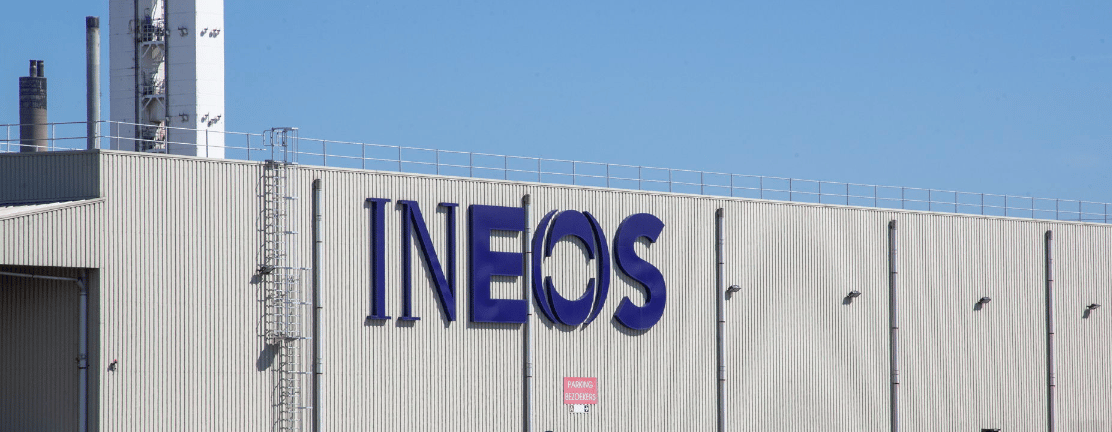- The Column
- Posts
- 🏭 Not all nitrogen is bad
🏭 Not all nitrogen is bad
Clariant and e-methanol, Ineos’ big cracker delay, monoethanolamine.
TOGETHER WITH

Good morning. After reading the second story today, curious to hear what you think about the future of Ineos’ ethane cracker project:
What year will Ineos' site in Antwerp start up?(They were targeting 2026.) |
From the condenser:
· Clariant and e-methanol
· Ineos’ big cracker delay
· MOTD: monoethanolamine

Clariant’s catalyst is for green methanol too
Swiss catalyst and speciality chemical producer, Clariant, announced that its methanol synthesis catalyst will be used at European Energy’s upcoming plant in Kasso, Denmark.
Wait, what plant?
European Energy is a renewable energy developer, which means that they coordinate, finance, and construct solar and wind farms. This upcoming site in Kasso is just an extension of that business: they’ve installed 300MW worth of solar panels, and plan use those panels to make hydrogen via water electrolysis, which they’ll then use to hydrogenate CO2 (bought from Anaergia’s renewable natural gas plants) to make methanol, which will then be sold into the maritime shipping industry as an alternative fuel.
Taking a step back:
We usually make methanol by reacting a mixture of carbon monoxide (not dioxide!) and hydrogen over some catalyst. Swapping that carbon monoxide for dioxide isn’t some revolutionary idea, it’s just difficult to do economically (largely because of the kinetics problem, which Clariant’s catalyst seems to handle pretty well, with a per-pass CO2 conversion of 30-40%), so we’re seeing a bunch of companies are taking a stab at it (such as Air Company, Celanese, Sumitomo, Perstorp, and now European Energy).
Looking forward:
The direct hydrogenation of CO2 to make methanol does show some promise, how we use that methanol is important, which is where it gets tricky—from the perspective of the maritime shipping industry, methanol produced from electrically-made hydrogen and captured CO2 is about as low-carbon as it gets, but from the perspective of society at large, we’re probably better off using that methanol to decarbonize the material value chain down stream—why not use that methanol to make acetic acid, VAM, or ethyl acetate?
SPONSORED

Get ready for the 2023 AIChE Annual Meeting
The AIChE Annual Meeting is the premier educational forum for chemical engineers interested in innovation and professional growth. Academic and industry experts will cover wide range of topics relevant to cutting-edge research, new technologies, and emerging growth areas in chemical engineering.The conference will be held from November 5-10th, 2023 at the Hyatt Regency Orlando in Orlando, Florida. Head over here to learn more!

Ineos’ new cracker was delayed by court
A local court in Belgium has delayed Ineos’ upcoming $3 billion ethane steam cracker complex in Antwerp, Belgium.
Catching you up:
Back in January 2019, Ineos announced plans to build a 1.45 million ton per year ethane steam cracker and a 830,000 ton per year propane dehydrogenation (PDH) plant in the Port of Antwerp. They decided to delay those PDH plans and push forward with the ethane cracker (targeting a start up in 2026), but now Ineos’ permit for the project was annulled. (This is all sort of a big deal because it would be Europe's first new steam cracker in decades, and it would be reliant on importing US-based ethane.)
So, a delay?
A bunch of NGOs got together to block this project, and they’ve successfully delayed it (by at least 6 months) by arguing that the nitrogen emissions from the site would have adverse effects on the local environment. It’s an interesting accusation, because while complexes like the one Ineos is looking to build do involve producing nitric oxides (from combustion of natural gas with air), those gases don’t have the same local effects that “nitrogen pollution” typically does (like algal blooms), and a large fraction of those nitric oxides are typically reduced to nitrogen (which has virtually zero impact on the environment).
Bigger picture:
The NGO’s objective here is probably just to be a pain for Ineos to deal with and to try to delay the project as much as possible, because nitrogen emissions aren’t a legitimate concern for this site. Ineos will probably just apply for another permit after accounting for whatever this court ruling demands, but we won’t really know until Ineos makes a comment—so far they’ve just said that they are “disappointed and shocked at the decision”.
Some more headlines
Ineos Styrolution's ethylene pipeline (their feedstock) exploded but is now contained
Evonik raised prices for its feed grade DL-methionine in the Asia Pacific region
KBR and Air Liquide are combining their technologies for low-carbon ammonia
One of SABIC's specialty materials is targeting applications in autonomous driving
Bayer is leaning into regenerative agriculture as a growth area
Molecule of The Day
Today's MOTD deserves a round of applause, it's monoethanolamine.

It's hard to say much about this molecule without mentioning its siblings. We can't make monoethanolamine (MEA) without making DEA and TEA too. Today, the world produces just under 2 million tons of these three molecules each year and about a third of each.
We make this stuff by reacting ethylene oxide with aqueous ammonia. It's mostly used to scrub flue gas emissions and produce detergents, emulsifiers, polishes, and pharmaceuticals.
The main companies producing all of these ethanolamines are Huntsman, Dow Chemical, and BASF (among quite a few others).
The reboiler
Company History: Ever wondered where all of these big oil companies came from? Read about how Rockefeller's company gave birth to them all.
Book: Admittedly, Perry's Handbook isn't cheap… but nobody has ever regretted buying this thing.
Article: Tom Baxter sums up why some politicians are so enamored by hydrogen energy.
The bottoms

Want to discuss this stuff with other readers? Join the Discord.
Interested in working for a startup? Join the talent pool.
Looking for older editions? Read the archive.
Curious about more than just news? Subscribe to Feedstockland.
Reply